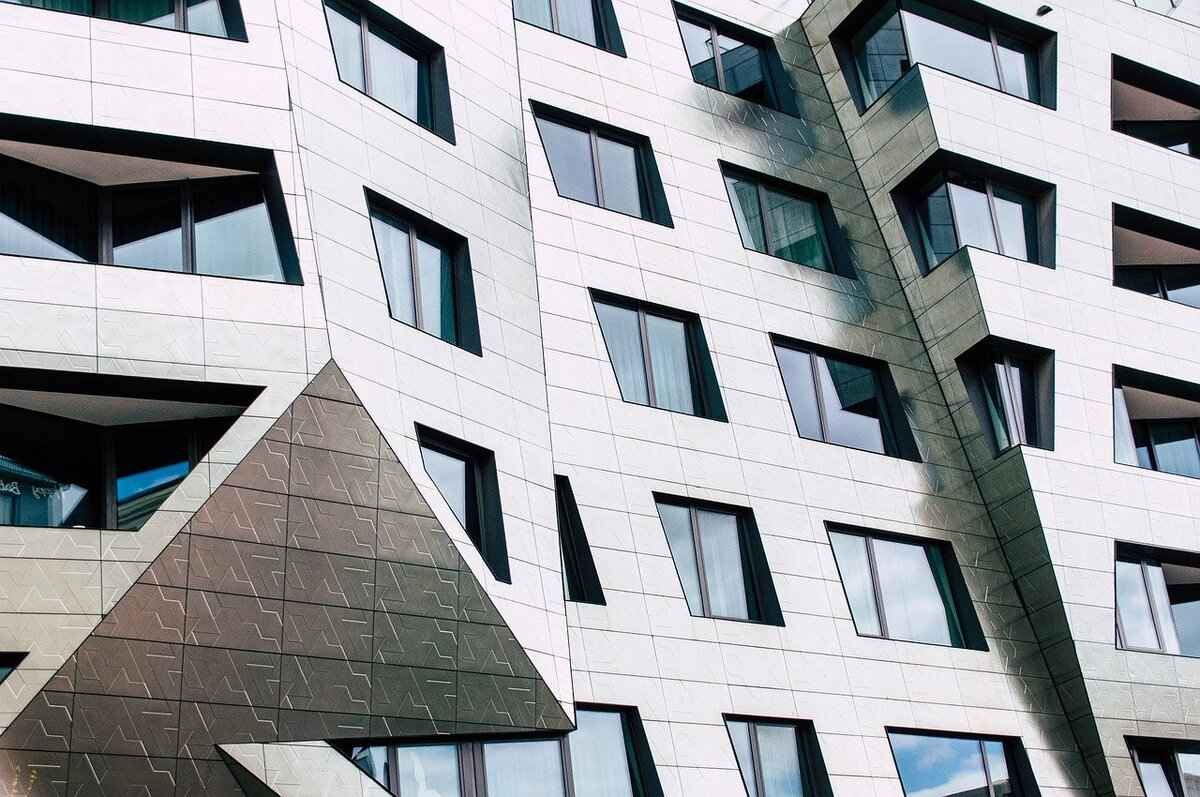This article delves into innovative strategies and design principles for crafting unique facades that not only capture attention but also enhance the architectural appeal of buildings. It offers practical insights tailored for architects and designers aiming to elevate their facade designs.
Understanding the Importance of Facades
Facades are the face of a building, playing a pivotal role in its aesthetic appeal and functionality. They are crucial in making a first impression on passersby and can significantly influence the overall character of a structure. An engaging facade can attract visitors and clients, serving as a marketing tool while also reflecting the building’s purpose. Furthermore, facades can enhance energy efficiency and sustainability, demonstrating a commitment to modern architectural practices.
Key Elements of Facade Design
The design of a facade encompasses various elements, including materials, colors, and textures. Each component plays a vital role in crafting a unique facade that stands out in its environment.
Material Selection
Choosing the right materials is essential for both durability and visual impact. Traditional options like brick and stone offer timeless appeal, while modern materials such as glass and metal can create a sleek, contemporary look. Architects should consider the local climate and the building’s intended use when selecting materials.
Natural vs. Synthetic Materials
Natural materials, such as wood and stone, provide organic beauty and sustainability, while synthetic materials can offer versatility and cost-effectiveness. Each has its pros and cons, and understanding these can help architects make informed decisions that align with their design vision.
Innovative Material Combinations
Combining different materials can yield striking visual effects. For instance, pairing glass with metal can create a dynamic contrast, enhancing the facade’s character and appeal. Exploring innovative combinations can lead to unique designs that stand out in any urban landscape.
Color Theory in Facade Design
Color plays a significant role in shaping perceptions and emotions. Effective use of color in facade design can evoke feelings of warmth, sophistication, or excitement. Architects should consider the surrounding environment and cultural context when selecting colors to ensure the facade resonates with its audience.
Texture and Pattern
The incorporation of texture and patterns adds depth and interest to a facade. Techniques such as layering materials or using patterned cladding can create a visually engaging surface that invites closer inspection. Creative texture applications can transform a simple facade into a statement piece.
Incorporating Sustainability in Facade Design
In today’s architectural landscape, sustainable design is paramount. Integrating eco-friendly practices into facade design not only enhances aesthetics but also contributes to environmental conservation. Architects should prioritize sustainability without compromising the visual appeal of their designs.
Energy-Efficient Facades
Designing energy-efficient facades can significantly reduce a building’s carbon footprint. Techniques such as incorporating insulation, using reflective materials, and optimizing window placement can enhance energy efficiency while maintaining an attractive facade. These features not only benefit the environment but also reduce operational costs.
Use of Green Materials
Utilizing sustainable materials in facade construction is essential for environmental conservation. Materials such as recycled metal, reclaimed wood, and low-VOC paints contribute to a building’s sustainability while offering unique aesthetic qualities. Emphasizing green materials can also appeal to environmentally conscious clients.
Trends in Modern Facade Design
Staying updated with the latest trends is crucial for creating standout facades. Current trends often reflect a blend of innovation and tradition, offering architects a wealth of inspiration for their designs.
Minimalism in Facade Design
Minimalism has emerged as a popular trend in facade design. Characterized by clean lines and a limited color palette, minimalism emphasizes simplicity and functionality. This approach can create elegant facades that resonate with modern sensibilities.
Dynamic Facades
Dynamic facades that respond to environmental conditions are gaining traction in contemporary architecture. Integrating technology into facade design can enhance adaptability, allowing buildings to adjust to sunlight, temperature, and even wind patterns. This innovative approach not only improves energy efficiency but also adds a layer of interaction with the environment.
Case Studies of Unique Facades
Examining successful examples of unique facades provides valuable insights into effective design strategies. Notable case studies showcase how architects have pushed boundaries and created remarkable facades that stand out.
Iconic Buildings and Their Facades
Focusing on iconic buildings reveals what makes their facades unique. Analyzing these structures can offer lessons in creativity, material usage, and cultural significance, providing architects with inspiration for their own designs.
Local vs. Global Influences
Local culture and global architectural trends significantly influence facade design. By examining examples from various regions, architects can understand how to blend local identity with contemporary design practices, creating facades that resonate with their surroundings while appealing to a broader audience.
Practical Tips for Designing Unique Facades
For architects and designers looking to create standout facades, practical tips are invaluable. Engaging with the surrounding environment and understanding the context of a building are crucial for effective facade design.
Engaging with the Surrounding Environment
Designing facades that harmonize with their surroundings can enhance a building’s appeal. Architects should consider the local architecture, landscape, and cultural nuances to create facades that feel integrated into their environment.
Consulting with Stakeholders
Collaboration with clients, engineers, and community members can enhance facade design. Involving stakeholders in the design process not only enriches the creative outcome but also ensures that the final product meets the needs and expectations of all parties involved.
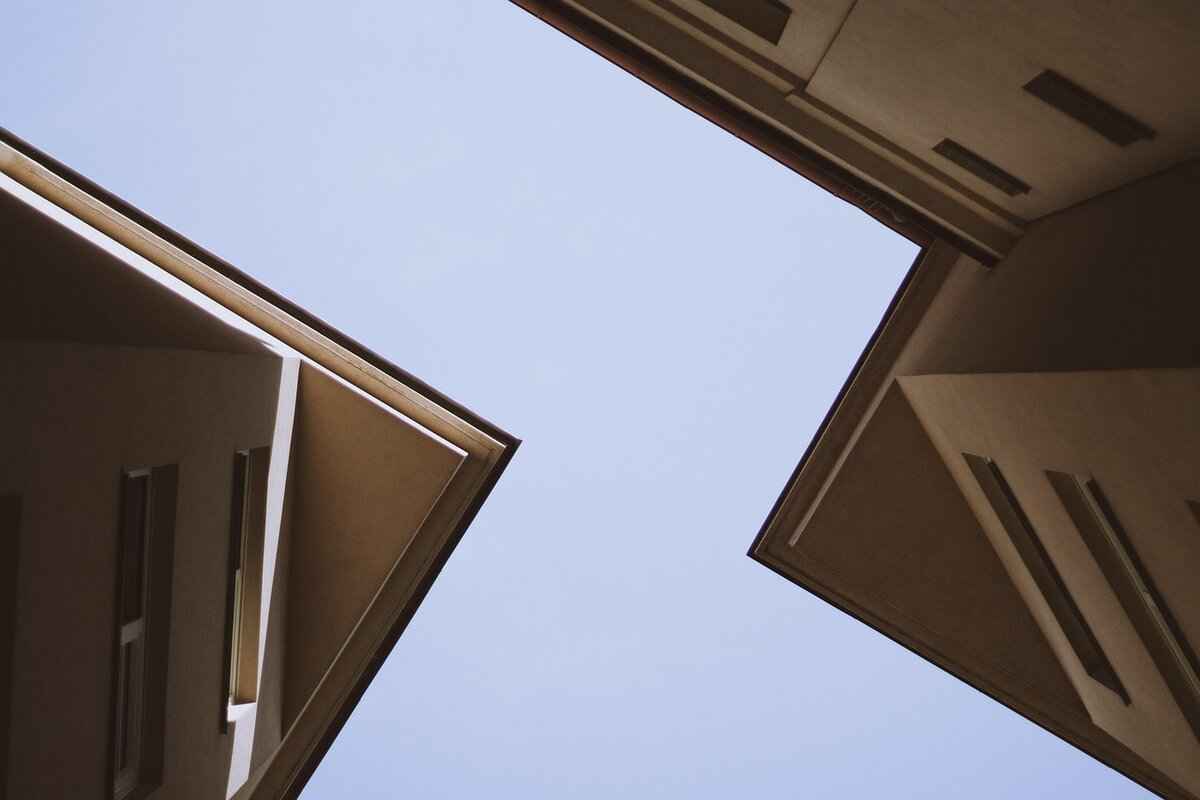
Understanding the Importance of Facades
Facades are not merely the exterior faces of buildings; they serve as the first point of contact between a structure and its surroundings. The significance of facades extends beyond aesthetics; they are integral to a building’s identity and functionality. A well-designed facade can evoke emotions, create a sense of place, and reflect the character of the environment. This section delves into the multifaceted roles that facades play in architecture, emphasizing their importance in shaping perceptions and experiences.
- First Impressions Matter: The facade of a building is often the first aspect that people notice. It can influence their initial perception and feelings about the structure. An attractive and well-thought-out facade can create a warm welcome, inviting visitors to explore further, while a poorly designed one can deter engagement.
- Architectural Identity: Facades contribute significantly to the architectural identity of a building. They can reflect cultural, historical, or regional characteristics, thereby anchoring the structure within its context. For instance, traditional materials and designs can evoke a sense of heritage, while modern, sleek facades might represent innovation and progress.
- Functional Aspects: Beyond aesthetics, facades play a crucial role in the functionality of a building. They are responsible for thermal performance, energy efficiency, and protection from the elements. A well-designed facade can enhance insulation, reduce energy consumption, and improve the overall comfort of the occupants.
- Influencing Surrounding Spaces: The design of a facade can also impact the surrounding urban landscape. Unique and visually appealing facades can enhance the character of a neighborhood, contributing to urban revitalization. They can create a sense of harmony or contrast, influencing how people interact with the space.
Moreover, facades can serve as a canvas for artistic expression. Many architects and designers use innovative materials and techniques to create stunning visual effects that capture attention. This artistic approach can transform a simple building into a landmark, making it memorable and iconic.
In conclusion, the importance of facades in architecture cannot be overstated. They are essential for creating lasting impressions, defining architectural identity, fulfilling functional requirements, and influencing the broader urban environment. As architects and designers continue to explore new materials and technologies, the potential for facades to enhance both aesthetics and functionality remains limitless.
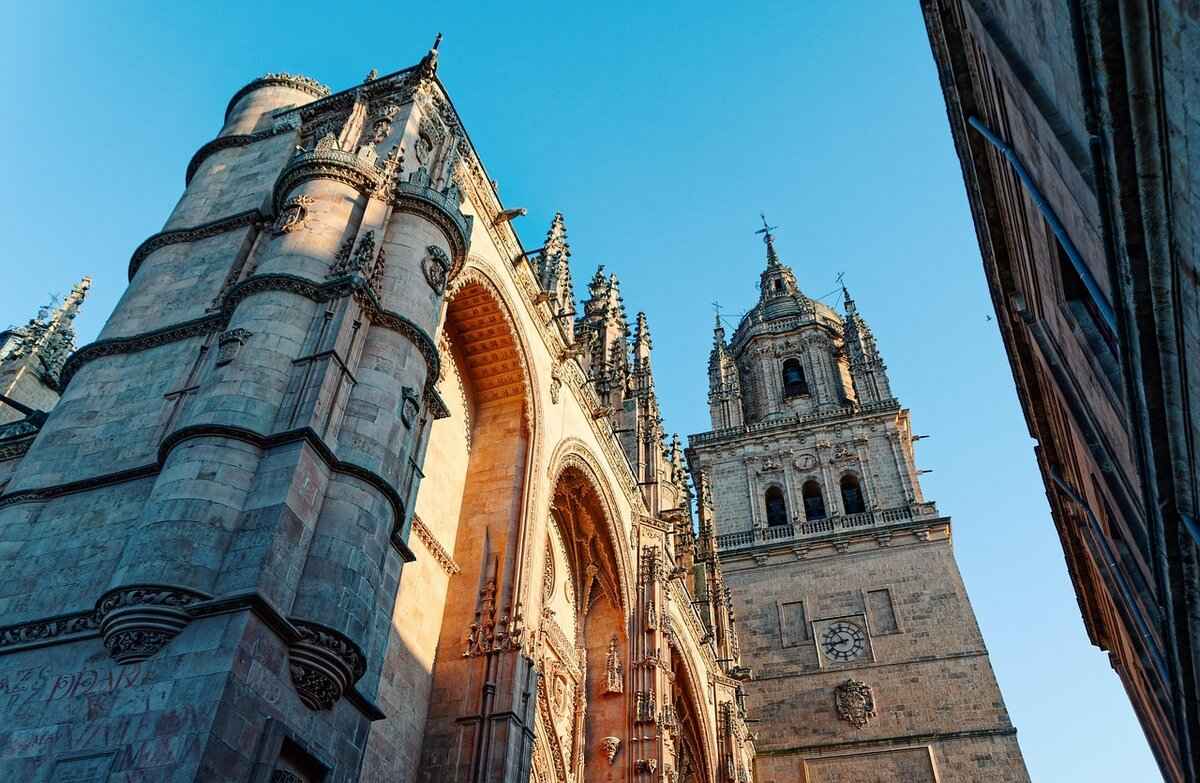
Key Elements of Facade Design
The design of a facade involves various elements such as materials, colors, and textures. Each of these components plays a significant role in creating a unique facade that not only enhances the building’s aesthetic appeal but also contributes to its functionality and sustainability. In this section, we delve into these crucial elements and explore how they can be effectively combined to achieve a distinctive facade.
Material Selection
Choosing the right materials is essential for both durability and visual impact. Different materials can evoke different emotions and perceptions. For example, natural materials like wood and stone provide a warm, organic feel, while glass and metal can create a sleek, modern appearance. Here are some popular materials used in facade design:
- Brick: Known for its durability and classic appearance, brick is a versatile choice that can be used in various architectural styles.
- Concrete: Often used for its strength, concrete can be molded into various shapes and finishes, allowing for creative designs.
- Glass: Provides transparency and light, making spaces feel larger and more open. It can also reflect the surroundings, creating a dynamic interaction with the environment.
- Metal: Available in various finishes, metals like aluminum and steel can add a contemporary touch and are often used in modern architecture.
Color Theory in Facade Design
Color plays a pivotal role in facade design, influencing how a building is perceived. Different colors can evoke different emotions and reactions. For instance, warm colors like red and orange can create a sense of energy and excitement, while cool colors like blue and green can evoke calmness and tranquility. When selecting colors for a facade, consider the surrounding environment, cultural significance, and the intended message of the building. A well-thought-out color palette can enhance the overall aesthetic and help the building stand out.
Texture and Pattern
Texture adds depth and interest to a facade. By incorporating various textures, designers can create visual contrast and enhance the tactile experience of the building. For example, a combination of smooth glass panels with rough stone cladding can create a striking visual effect. Patterns can also be used to break up large surfaces, making them more engaging. Techniques such as perforation, layering, and embossing can be employed to add unique textures and patterns to the facade, further contributing to its individuality.
Incorporating Sustainability in Facade Design
As sustainability becomes increasingly important in architecture, integrating eco-friendly practices into facade design is essential. Using sustainable materials, optimizing energy efficiency, and incorporating green technologies can significantly reduce the environmental impact of a building. For instance, incorporating green walls or solar panels not only enhances the building’s aesthetic appeal but also contributes to its sustainability goals. By prioritizing sustainability in facade design, architects can create structures that are not only visually striking but also environmentally responsible.
In summary, the key elements of facade design—materials, color, and texture—are crucial in creating unique and impactful facades. By thoughtfully combining these components, architects can design buildings that not only stand out visually but also resonate with their surroundings and serve their intended purpose effectively.
Material Selection
is a pivotal aspect of facade design, impacting both the durability and visual appeal of a building. The choice of materials can transform a structure from ordinary to extraordinary, influencing not only aesthetics but also functionality and sustainability. In this section, we will explore popular materials used in facade design, their applications, and how they contribute to creating unique and lasting impressions.
When considering facade materials, architects and designers often look for a balance between performance and style. Here are some widely used materials along with their characteristics:
- Brick: A timeless choice, brick offers excellent durability and insulation. Its natural texture and color variations allow for creative design possibilities.
- Glass: Modern architecture frequently employs glass facades for their sleek appearance and ability to reflect light. Glass can create a sense of openness and connectivity with the environment.
- Concrete: Known for its strength, concrete can be molded into various shapes and finishes. It is often used in combination with other materials to add depth and interest.
- Wood: Providing warmth and a natural aesthetic, wood is increasingly popular in contemporary designs. However, it requires proper treatment to withstand the elements.
- Metal: Metals like aluminum and steel are favored for their modern look and durability. They can be finished in various ways, including anodizing and powder coating, to achieve different effects.
In addition to traditional materials, innovative options are emerging in facade design:
- Composite Materials: These materials combine the best properties of different substances, offering lightweight solutions with high durability.
- Recycled Materials: Using recycled materials in facade design not only promotes sustainability but also adds unique character to buildings.
The application of these materials extends beyond mere aesthetics. For instance, glass facades can enhance natural lighting, reducing the need for artificial light and thereby lowering energy costs. Similarly, insulated concrete panels can improve thermal performance, contributing to energy efficiency.
Furthermore, the choice of materials should consider the building’s environmental context. For example, in coastal areas, materials must be resistant to salt and moisture, while in urban settings, noise reduction may be a priority. Thus, selecting the right materials is not just about appearance; it’s about ensuring the longevity and functionality of the facade.
Ultimately, the selection of materials in facade design is a multifaceted decision that requires careful consideration of various factors, including local climate, building purpose, and desired aesthetic. By understanding the strengths and weaknesses of each material, architects can create facades that are not only visually stunning but also practical and resilient.
Natural vs. Synthetic Materials
In the realm of facade design, the choice between natural and synthetic materials is a critical decision that can significantly influence both the aesthetics and functionality of a building. Each category offers unique benefits and drawbacks, making it essential for architects and designers to carefully evaluate their options.
- Natural Materials
- Wood: Renowned for its warmth and versatility, wood can be used in various styles and finishes. It provides excellent insulation but requires regular maintenance to prevent decay and damage from pests.
- Stone: Stone facades exude a sense of permanence and durability. They are resistant to weathering and offer a timeless aesthetic. However, the cost of stone can be prohibitive, and its weight may require additional structural support.
- Brick: A classic choice, brick provides a traditional look with good thermal mass. While durable, brick can be susceptible to moisture issues if not properly installed.
- Synthetic Materials
- Vinyl: A popular choice for its affordability and low maintenance, vinyl can mimic the appearance of wood or other materials. However, it may not offer the same level of durability or aesthetic appeal as natural options.
- Fiber Cement: This composite material is designed to withstand harsh weather conditions and is resistant to rot and pests. It can be made to resemble wood or stucco, providing versatility in design.
- Metal: Metals like aluminum and steel are often used for modern facades due to their sleek appearance and durability. They are lightweight and can be recycled, but they may require coatings to prevent corrosion.
Pros and Cons
When comparing natural and synthetic materials, it’s crucial to consider their respective advantages and disadvantages:
| Material Type | Pros | Cons |
|---|---|---|
| Natural | Unique aesthetics, sustainable options, good insulation | Higher cost, maintenance required, potential for decay |
| Synthetic | Cost-effective, low maintenance, versatile | Less durable, can lack authenticity, environmental concerns |
In conclusion, the choice between natural and synthetic materials for facade design hinges on various factors, including budget, desired aesthetics, and environmental considerations. By understanding the pros and cons of each option, architects and designers can make informed decisions that align with their design vision and sustainability goals. Ultimately, the right material choice can enhance the building’s character while ensuring it meets functional requirements.
Innovative Material Combinations
In the realm of architectural design, the combination of different materials can result in stunning visual effects that not only enhance the aesthetic appeal of a building but also contribute to its overall character. By thoughtfully integrating various materials, architects can create facades that stand out, tell a story, and resonate with the surrounding environment.
One of the most compelling aspects of using innovative material combinations is the contrast they can create. For example, pairing natural stone with sleek glass can evoke a sense of harmony between the organic and the modern. This juxtaposition not only draws the eye but also invites viewers to appreciate the unique qualities of each material. Wood, with its warmth and texture, can complement the cold, reflective surfaces of metal, creating a dynamic interplay that captivates onlookers.
Moreover, the use of different materials can enhance a building’s functional attributes. For instance, incorporating insulated panels alongside traditional brick can improve energy efficiency while maintaining the desired aesthetic. This approach allows architects to push the boundaries of conventional design while adhering to modern sustainability standards. The integration of materials like recycled metals or green concrete not only supports eco-friendly practices but also adds a layer of uniqueness to the facade.
Another vital aspect to consider is the textural variation that different materials can provide. A facade that combines smooth surfaces with rough textures can create a visual rhythm that captures attention. For example, using perforated metal panels alongside stucco can create shadows and light play, adding depth and dimension to the structure. This approach not only enhances the visual appeal but also contributes to the building’s interaction with light, changing its appearance throughout the day.
Incorporating innovative material combinations also allows for greater cultural expression. For example, a building in a historic district might blend local materials, such as clay tiles, with contemporary elements like glass or steel, creating a dialogue between the past and present. This not only respects the architectural heritage of the area but also showcases a forward-thinking approach to design.
Furthermore, as cities evolve, the need for adaptive reuse of materials becomes increasingly relevant. By repurposing materials from existing structures, architects can create facades that are not only unique but also environmentally responsible. This practice not only reduces waste but also imbues new buildings with a sense of history and character.
In conclusion, the exploration of innovative material combinations in facade design opens up a world of possibilities. By merging different materials, architects can create visually striking, functional, and culturally relevant structures that enhance the character of their surroundings. As the architectural landscape continues to evolve, embracing this approach will undoubtedly lead to more unique and engaging buildings.
Color Theory in Facade Design
Color is a powerful tool in architecture, influencing perceptions, emotions, and even behaviors. In facade design, the strategic use of color can significantly enhance a building’s visual appeal and its connection to the environment. This section delves into the intricate relationship between color and architectural facades, offering insights into how to effectively utilize color for maximum impact.
Understanding color theory is essential for architects and designers. Colors can evoke specific feelings and reactions; for instance, warm colors like red and orange can create a sense of energy and warmth, while cool colors such as blue and green tend to evoke calmness and tranquility. When designing a facade, it is crucial to consider the psychological effects of color on the building’s occupants and the surrounding community.
The Role of Color in Identity and Branding
Color also plays a vital role in establishing a building’s identity and brand. For commercial buildings, the facade’s color scheme can reflect the brand’s values and personality. For example, a tech company may opt for sleek, modern colors like silver and blue to convey innovation and professionalism, while a creative agency might choose vibrant, eclectic colors to express creativity and dynamism.
Integrating Color with Materials and Textures
When selecting colors for a facade, it is essential to consider how they interact with the materials and textures used. For instance, a natural stone facade may look striking in earthy tones that complement the surrounding landscape, while a glass facade might benefit from bold, reflective colors that enhance its modern aesthetic. The combination of color, material, and texture can create a visually stunning facade that captures attention and enhances the building’s character.
Seasonal and Environmental Considerations
Another important aspect of color selection is its adaptability to seasonal changes and environmental conditions. Colors that appear vibrant in sunlight may look different under cloudy skies or at dusk. Designers should consider how the facade will look throughout the year and in various lighting conditions to ensure a consistent and appealing appearance.
Case Studies of Successful Color Use in Facades
- The Sydney Opera House: Its iconic white sails stand out against the blue waters, embodying harmony with nature.
- The Guggenheim Museum Bilbao: The interplay of titanium and glass creates a dynamic facade that changes color with the light.
- Casa Batlló in Barcelona: Antoni Gaudí’s use of vibrant colors and organic shapes creates a facade that is both whimsical and captivating.
In conclusion, the effective use of color in facade design is crucial for creating impactful and memorable buildings. By understanding color theory, integrating materials and textures, considering environmental factors, and drawing inspiration from successful case studies, architects and designers can create facades that not only stand out but also resonate with their intended audience.
Texture and Pattern
When it comes to architectural design, the use of texture and patterns is a vital element that can significantly enhance the visual appeal of a facade. These components not only create depth but also evoke emotions, making a building more inviting and engaging. In this section, we will explore various techniques to creatively incorporate textures and patterns into facade design, ensuring that your structure stands out in its environment.
Texture plays a crucial role in how a facade is perceived. It can create a sense of tactility and visual interest, allowing a building to resonate with its surroundings. Different textures can convey various messages; for instance, a rough, stone-like texture may evoke feelings of strength and permanence, while a smooth, glassy finish can suggest modernity and elegance.
Patterns can be employed in multiple ways, from simple geometric designs to intricate motifs. They can be created using materials like tiles, metal panels, or even through the arrangement of windows and balconies. By utilizing patterns, architects can guide the eye and create focal points that draw attention to specific areas of the facade.
- Layering Materials: Combining different materials can create a rich tapestry of textures. For example, pairing rough stone with smooth glass can create an intriguing contrast that enhances the facade’s depth.
- Using Color Variations: Subtle differences in color can also contribute to the perception of texture. A monochromatic facade can appear more dynamic when varying shades are used to emphasize patterns.
- 3D Elements: Incorporating three-dimensional elements, such as protruding panels or recessed sections, can add depth and interest to a facade, making it more visually engaging.
Many iconic buildings have successfully incorporated texture and patterns into their facades. For instance, the Gherkin in London utilizes a unique pattern of glass panels that not only enhances its aesthetic appeal but also contributes to its energy efficiency. Similarly, the Vitra Fire Station in Germany showcases a striking interplay of textures, using concrete and glass to create a dynamic facade that changes with the light throughout the day.
Incorporating texture and patterns into facade design is an essential strategy for creating visually captivating buildings. By understanding the importance of these elements and employing various techniques, architects can enhance the depth and character of their designs. As trends continue to evolve, the creative use of texture and patterns will remain a fundamental aspect of architectural innovation.

Incorporating Sustainability in Facade Design
Sustainable design is becoming increasingly essential in modern architecture as architects and designers seek to minimize environmental impact while maintaining aesthetic appeal. The facade of a building serves not only as its exterior skin but also plays a vital role in energy efficiency, resource conservation, and overall sustainability. This section explores various strategies for integrating eco-friendly practices into facade design without compromising on visual appeal.
The facade is the first point of interaction between a building and its environment. It has a significant influence on energy consumption, climate impact, and even the health of occupants. By prioritizing sustainability in facade design, architects can create structures that are not only visually stunning but also environmentally responsible. This approach aligns with the growing demand for greener buildings, driven by both regulatory requirements and public awareness of climate change.
One of the primary goals of sustainable facade design is to enhance energy efficiency. This can be achieved through various techniques:
- Insulation: High-quality insulation materials can significantly reduce thermal loss, leading to lower heating and cooling costs.
- Passive Solar Design: Facades can be designed to maximize natural light while minimizing heat gain, using overhangs or shading devices.
- Ventilated Facades: Incorporating ventilated systems can improve air circulation, reducing reliance on mechanical cooling.
Choosing sustainable materials is crucial for reducing the ecological footprint of a building. Here are some options:
- Recycled Materials: Utilizing recycled content in facade materials, such as reclaimed wood or recycled metal, can significantly lower environmental impact.
- Low-VOC Materials: Selecting materials that emit low levels of volatile organic compounds (VOCs) contributes to better indoor air quality.
- Biodegradable Options: Exploring biodegradable materials can help ensure that building components have minimal long-term environmental effects.
Incorporating sustainability into facade design often involves innovative techniques:
- Green Walls: Vertical gardens not only enhance aesthetics but also improve air quality and provide insulation.
- Solar Panels: Integrating photovoltaic panels into the facade can generate renewable energy, offsetting the building’s energy consumption.
- Dynamic Facades: Utilizing responsive materials that adapt to environmental conditions can enhance energy efficiency and occupant comfort.
While sustainability is crucial, it is equally important to maintain the aesthetic appeal of a building. Architects can achieve this balance by:
- Creative Material Combinations: Blending sustainable materials with traditional ones can create visually striking facades.
- Color and Texture: Thoughtful use of color and texture can enhance the visual impact while using eco-friendly materials.
- Architectural Style: Adapting sustainable practices to fit the architectural style of the building ensures that eco-friendliness does not come at the cost of beauty.
In conclusion, incorporating sustainability into facade design is not just a trend but a necessity in modern architecture. By focusing on energy efficiency, selecting green materials, and employing innovative design techniques, architects can create facades that are both environmentally responsible and aesthetically pleasing. This approach not only benefits the planet but also enhances the quality of life for building occupants.
Energy-Efficient Facades
In today’s world, where environmental concerns are at the forefront, have emerged as a crucial component of sustainable architecture. These facades not only enhance the aesthetic appeal of buildings but also play a significant role in minimizing energy consumption and reducing a building’s carbon footprint. This section delves into various techniques and strategies that architects and designers can implement to create facades that are not only functional but also environmentally responsible.
One of the primary techniques for achieving energy efficiency in facades is the incorporation of high-performance glazing. This involves using windows and glass panels that have been treated to reflect heat and UV rays, thereby reducing the need for artificial heating and cooling. Low-emissivity (Low-E) glass is a popular choice, as it allows natural light to enter while minimizing thermal transfer. By optimizing the placement and size of windows, designers can maximize daylighting, which significantly reduces reliance on artificial lighting.
Another effective strategy is the use of insulated wall systems. These systems consist of multiple layers of materials designed to provide superior thermal resistance. For instance, incorporating structural insulated panels (SIPs) or insulated concrete forms (ICFs) can drastically improve a building’s energy efficiency. These materials not only insulate but also provide structural integrity, making them a dual-purpose solution.
| Facade Type | Benefits |
|---|---|
| Green Walls | Enhance insulation, improve air quality, and reduce urban heat. |
| Dynamic Facades | Adjust to environmental conditions, optimizing energy use throughout the day. |
| Reflective Materials | Minimize heat absorption, reducing cooling costs. |
Moreover, the integration of renewable energy technologies into facade design can further enhance energy efficiency. Solar panels can be seamlessly integrated into the facade, allowing buildings to harness solar energy for their power needs. This not only contributes to energy savings but also promotes renewable energy use. Additionally, the incorporation of green roofs or living walls can provide insulation, improve air quality, and promote biodiversity, making them excellent choices for eco-conscious designs.
Architects are also increasingly exploring the concept of dynamic facades, which are designed to adapt to changing environmental conditions. These facades can include elements such as operable shading devices, which adjust to the position of the sun, or materials that change their properties based on temperature or humidity. This adaptability not only enhances comfort for occupants but also optimizes energy use throughout the day.
In conclusion, designing energy-efficient facades is not just about aesthetics; it’s about creating buildings that are sustainable, functional, and responsive to their environment. By employing a combination of high-performance materials, innovative technologies, and sustainable practices, architects can significantly reduce a building’s energy consumption and carbon footprint, paving the way for a more sustainable future.
Use of Green Materials
In the realm of modern architecture, the use of sustainable materials in facade construction has emerged as a pivotal strategy for promoting environmental conservation. This approach not only enhances the aesthetic appeal of buildings but also significantly contributes to reducing their ecological footprint. The integration of green materials in facade design is essential for architects and builders aiming to create structures that are both visually striking and environmentally responsible.
What are Green Materials? Green materials are sourced from sustainable practices, often recycled or rapidly renewable, and have a minimal environmental impact throughout their lifecycle. Examples include bamboo, reclaimed wood, recycled metal, and low-VOC (volatile organic compounds) paints. These materials not only reduce waste but also often require less energy to produce compared to traditional building materials.
Benefits of Using Sustainable Materials in Facade Construction
- Reduced Carbon Footprint: By utilizing materials that are locally sourced or recycled, the carbon emissions associated with transportation and manufacturing are significantly minimized.
- Energy Efficiency: Many sustainable materials possess natural insulating properties, which can enhance the energy efficiency of a building. For instance, using straw bales or rammed earth can help maintain indoor temperatures, reducing reliance on heating and cooling systems.
- Durability and Longevity: Sustainable materials often exhibit superior durability, leading to longer-lasting facades that require less frequent replacement and maintenance, thus conserving resources over time.
- Healthier Indoor Environments: Green materials are less likely to emit harmful chemicals, promoting better indoor air quality for occupants. This is particularly vital in urban areas where air pollution is a concern.
- Enhanced Aesthetic Appeal: Many sustainable materials offer unique textures and colors, allowing architects to create visually appealing facades that stand out while adhering to eco-friendly principles.
How Do Sustainable Materials Contribute to Environmental Conservation? The adoption of green materials plays a crucial role in mitigating the environmental impacts of construction. For instance, the use of recycled materials reduces the demand for new raw materials, thereby conserving natural resources. Additionally, these materials often require less energy for production, leading to lower greenhouse gas emissions.
Moreover, the implementation of sustainable practices in facade construction encourages a shift in the construction industry towards more environmentally friendly methods. This shift not only benefits the immediate environment but also sets a precedent for future projects, fostering a culture of sustainability.
Architects and builders are increasingly recognizing that the choice of materials can significantly influence the overall sustainability of a building. By prioritizing green materials, they can create facades that are not only functional and beautiful but also contribute to a healthier planet.
In conclusion, the use of sustainable materials in facade construction is a vital consideration for modern architecture. It offers numerous benefits, including reduced environmental impact, enhanced energy efficiency, and improved occupant health. As the demand for eco-friendly building practices continues to grow, embracing green materials will be essential for architects and builders committed to creating a sustainable future.

Trends in Modern Facade Design
In the rapidly evolving world of architecture, staying updated with the latest trends is essential for creating facades that not only stand out but also resonate with contemporary aesthetics and functionality. This section delves into the current trends influencing facade design, offering insights that can guide architects and designers in their creative processes.
- Emphasis on Sustainability: As environmental concerns grow, the demand for sustainable facades is on the rise. Designers are increasingly using eco-friendly materials and energy-efficient technologies to create buildings that minimize their carbon footprint. This trend not only addresses environmental issues but also appeals to a growing demographic of eco-conscious consumers.
- Integration of Technology: The advent of smart technology has transformed facade design. Dynamic facades equipped with sensors and responsive materials can adapt to environmental conditions, optimizing energy use and enhancing comfort. This trend highlights the intersection of architecture and technology, paving the way for innovative designs that are both functional and aesthetically pleasing.
- Minimalist Design: Minimalism continues to dominate the architectural landscape. Facades characterized by clean lines, simple forms, and a restrained color palette create a sense of elegance and sophistication. This approach emphasizes the beauty of simplicity while allowing the surrounding environment to play a significant role in the overall aesthetic.
- Use of Natural Materials: There is a growing preference for natural materials such as wood, stone, and brick. These materials not only provide durability but also offer a tactile quality that enhances the visual appeal of facades. Incorporating natural elements fosters a connection to the environment, making buildings feel more organic and inviting.
- Color Trends: The use of color in facade design is evolving, with bold and vibrant hues gaining popularity. Designers are experimenting with striking color combinations to create facades that capture attention and evoke emotions. This trend encourages creativity and allows for personal expression in architectural design.
In addition to these trends, there is a notable shift towards contextual design. Architects are increasingly considering the cultural and historical significance of their surroundings when designing facades. This approach not only respects local heritage but also enhances the building’s integration into its environment, creating a sense of place and identity.
Ultimately, the trends in modern facade design reflect a broader movement towards innovation, sustainability, and community engagement. By embracing these trends, architects and designers can create facades that are not only visually striking but also contribute positively to the environment and society.
Minimalism in Facade Design
has emerged as a defining trend in contemporary architecture, emphasizing simplicity and functionality. This design philosophy advocates for the reduction of unnecessary elements, allowing the essential features of a building to shine. By stripping away excess, architects can create facades that are not only visually striking but also deeply resonant with the surrounding environment.
At its core, minimalism in facade design revolves around a few key principles:
- Simplicity: Minimalist facades often feature clean lines and a limited color palette. This simplicity allows the structure to blend harmoniously with its surroundings while making a bold statement.
- Functionality: Every element of a minimalist facade serves a purpose, whether it’s for aesthetics, insulation, or light control. This functional approach ensures that the design is not just beautiful but also practical.
- Natural Materials: The use of natural materials such as wood, stone, and glass is prevalent in minimalist designs. These materials not only enhance the aesthetic appeal but also promote sustainability.
- Open Spaces: Minimalism often incorporates large windows and open spaces, allowing for natural light to flood the interior. This connection between indoor and outdoor spaces enhances the overall experience of the building.
To apply these principles effectively, architects can consider the following strategies:
- Material Selection: Choosing high-quality, sustainable materials that complement the minimalist aesthetic is crucial. For instance, using large glass panels can create a seamless transition between the interior and exterior, while natural stone can add texture without overwhelming the design.
- Color Palette: A neutral color palette is often favored in minimalist designs. Shades of white, gray, and beige can create a calm and cohesive look, allowing the building to harmonize with its environment.
- Proportion and Scale: The proportions of windows, doors, and other facade elements should be carefully considered. A well-balanced facade will draw the eye and create a sense of tranquility.
Moreover, minimalism is not just about aesthetics; it also promotes sustainability. By focusing on essential elements, architects can reduce waste and energy consumption during the construction process. Furthermore, minimalist designs often incorporate energy-efficient technologies, such as solar panels and green roofs, contributing to a building’s overall sustainability.
In conclusion, the principles of minimalism in facade design can lead to the creation of elegant and functional buildings that stand the test of time. By embracing simplicity, functionality, and sustainability, architects can craft facades that not only captivate the eye but also enhance the well-being of their occupants and the environment.
Dynamic Facades
Dynamic Facades: The Future of Architectural DesignDynamic facades represent a revolutionary approach in architectural design, where the exterior of a building adapts to changing environmental conditions. This innovative concept is gaining traction in modern architecture due to its potential to enhance both aesthetic appeal and energy efficiency. By integrating technology into facade design, architects can create structures that not only respond to the environment but also contribute to sustainability.
- What are Dynamic Facades? Dynamic facades are building envelopes that can change their appearance or performance based on various factors such as sunlight, temperature, and weather conditions.
- Why are Dynamic Facades Important? They offer the ability to optimize natural light, improve energy efficiency, and enhance occupant comfort while providing a unique visual experience.
Technological Integration in Facade Design
The integration of technology in facade design is vital for creating dynamic systems. Various technologies can be employed, such as:
- Responsive Materials: These materials can alter their properties in response to environmental stimuli. For instance, photochromic or thermochromic materials change color based on light exposure or temperature, respectively.
- Automated Shading Systems: These systems adjust the amount of sunlight entering a building by utilizing sensors that detect sunlight intensity and angle. This not only enhances comfort but also reduces reliance on artificial lighting.
- Smart Glass: This technology enables windows to change their transparency based on external conditions, allowing for better control over heat and light entering the building.
Benefits of Dynamic Facades
The advantages of dynamic facades extend beyond aesthetics. They contribute significantly to sustainability and energy efficiency:
- Energy Savings: By optimizing natural light and reducing the need for heating and cooling, dynamic facades can lead to substantial energy savings over time.
- Enhanced Comfort: Occupants benefit from improved thermal comfort and reduced glare, creating a more pleasant indoor environment.
- Visual Appeal: The ability to change appearance adds a layer of dynamism to buildings, making them visually engaging and unique.
Challenges in Implementing Dynamic Facades
Despite the benefits, there are challenges associated with dynamic facades that architects and builders must consider:
- Cost: The initial investment in technology and materials can be high, which may deter some projects.
- Maintenance: Advanced systems may require more maintenance and expertise than traditional facades, which can complicate long-term upkeep.
- Regulatory Hurdles: Compliance with building codes and regulations can be more complex for dynamic systems, necessitating careful planning and consultation.
Conclusion
Dynamic facades represent a significant advancement in architectural design, merging functionality with innovative aesthetics. As technology continues to evolve, the potential for these adaptable systems will only grow, paving the way for buildings that not only respond to their environment but also contribute positively to their surroundings. By embracing dynamic facade technology, architects can create structures that are not only visually striking but also environmentally responsible, marking a new era in sustainable architecture.
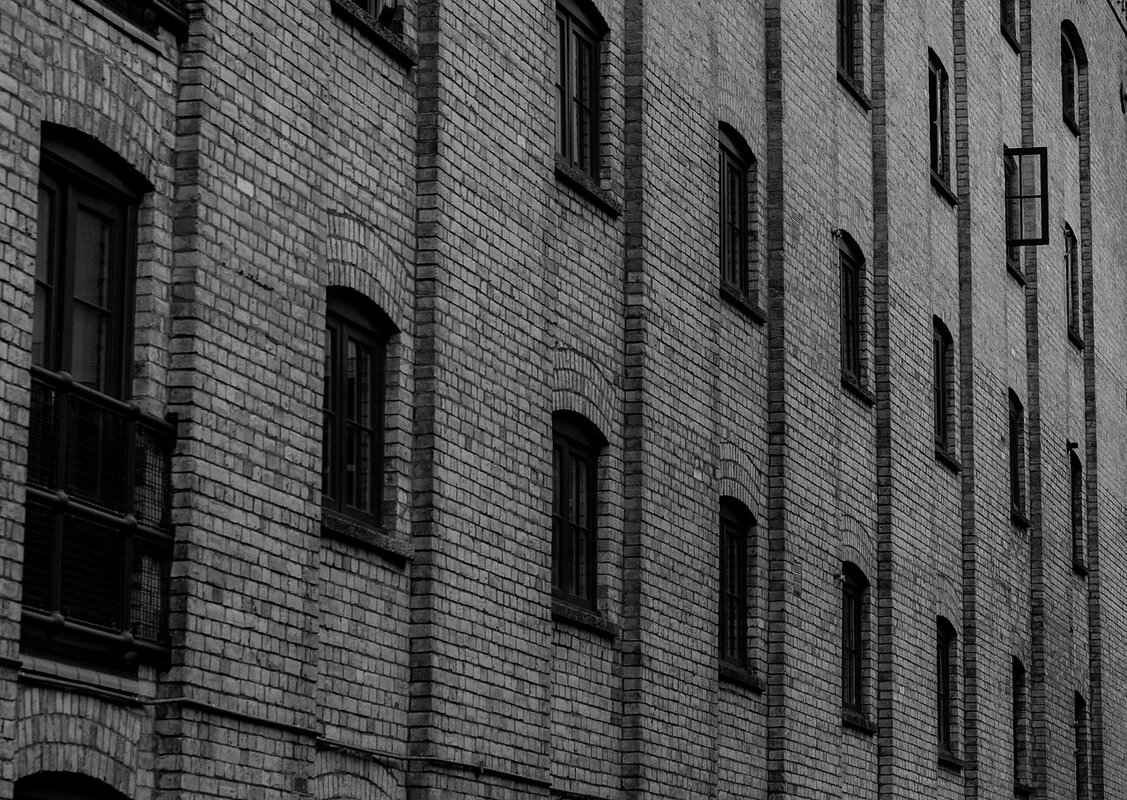
Case Studies of Unique Facades
Examining successful examples of unique facades provides valuable insights into innovative architectural design. This section presents notable case studies that illustrate how creativity and functionality can come together to create stunning building exteriors.
- The Guggenheim Museum, Bilbao: Designed by Frank Gehry, this iconic structure is renowned for its organic forms and innovative use of titanium. The facade’s shimmering surface reflects light, creating a dynamic visual experience that changes throughout the day. This building demonstrates how unique materials can redefine architectural norms.
- 30 St Mary Axe (The Gherkin), London: This skyscraper, designed by Norman Foster, features a distinctive curved glass facade that not only enhances its aesthetic appeal but also improves energy efficiency. The building’s unique shape allows for natural ventilation, showcasing how modern design can meet sustainable goals.
- Casa Batlló, Barcelona: Antoni Gaudí’s masterpiece is a prime example of how cultural influences can shape facade design. The building’s colorful mosaics and organic shapes echo natural forms, reflecting Gaudí’s deep appreciation for nature. This case study highlights the importance of context and cultural relevance in facade design.
- Walt Disney Concert Hall, Los Angeles: Another creation by Frank Gehry, this building features a striking stainless steel exterior that resembles a ship’s sails. The dynamic curves of the facade create an engaging visual experience while enhancing acoustics inside the concert hall. This case study emphasizes the interplay between form and function in facade design.
Lessons Learned from Iconic Facades
These case studies reveal several key lessons for architects and designers. Firstly, the choice of materials can dramatically influence both the appearance and functionality of a facade. For instance, the use of glass in The Gherkin not only contributes to its sleek look but also promotes energy efficiency through natural ventilation.
Secondly, innovative shapes and forms can enhance a building’s identity. Gehry’s works often challenge conventional design, pushing the boundaries of what is possible in architecture. This encourages architects to think outside the box and embrace creativity in their designs.
Lastly, the integration of cultural elements can enrich a facade’s narrative. Casa Batlló’s design is deeply rooted in Catalan culture, reminding us that local context should be a significant consideration in facade design.
In conclusion, studying these unique facades offers valuable insights into the principles of effective architectural design. By understanding the successes of these iconic buildings, architects can apply these lessons to create their own standout facades that resonate with their intended audience.
Iconic Buildings and Their Facades
When we think about iconic architecture, the facades of these structures often come to mind as defining elements. The uniqueness of a building’s facade can tell a story, reflect cultural values, and even influence urban landscapes. This section delves into what makes the facades of iconic buildings stand out and the valuable lessons architects and designers can glean from them.
One of the most significant aspects of a facade is its materiality. For instance, the use of glass in the Burj Khalifa not only highlights the building’s height but also allows for stunning reflections of the surrounding cityscape. This interaction with the environment is crucial; it creates a dialogue between the building and its context, enhancing its visual impact. The choice of materials can also reflect local resources and craftsmanship, as seen in the intricate stonework of the Notre-Dame Cathedral.
Another vital component is color. The vibrant hues of the Casa Batlló by Antoni Gaudí are a testament to how color can evoke emotions and contribute to a building’s identity. Through the use of bold colors and patterns, Gaudí created a facade that is not only visually striking but also invites curiosity and engagement from passersby. This approach emphasizes the importance of understanding color theory in facade design, as it can significantly affect the perception of a building.
Texture and pattern are also essential elements that add depth and character to facades. The Guggenheim Museum in Bilbao, designed by Frank Gehry, showcases a dynamic interplay of curves and textures that challenge traditional architectural norms. The innovative use of titanium panels creates a shimmering effect that changes with the light, making the facade a living, breathing part of the city. This highlights the importance of incorporating dynamic elements into facade design to create a memorable visual experience.
Furthermore, the integration of sustainability into facade design is becoming increasingly important. Iconic buildings like the One Central Park in Sydney utilize green walls that not only enhance aesthetics but also contribute to environmental sustainability. These living facades improve air quality and promote biodiversity, demonstrating how modern architecture can address ecological concerns while maintaining visual appeal.
In conclusion, studying the facades of iconic buildings reveals a wealth of knowledge for architects and designers. From material selection and color application to texture integration and sustainability, these elements combine to create unique facades that resonate with their environments. By analyzing these aspects, we can draw inspiration to craft our own distinctive architectural statements.
Local vs. Global Influences
In the realm of architecture, the design of facades serves as a canvas where local culture meets global trends. This intersection creates a rich tapestry of architectural expression that reflects both the unique identity of a place and the broader influences of modern design philosophies. Understanding how these forces interact can significantly enhance the effectiveness and appeal of facade designs.
Local culture profoundly impacts facade design by embodying the traditions, materials, and aesthetics specific to a region. For instance, in Japan, traditional wooden structures often feature intricate lattice patterns and natural materials that harmonize with the surrounding environment. This design approach not only respects the cultural heritage but also promotes sustainability by utilizing locally sourced materials.
Conversely, global architectural trends introduce innovative concepts that transcend geographical boundaries. The rise of minimalism, for example, emphasizes clean lines and functional forms, which can be found in urban centers worldwide. Architects in cities like New York and London have adopted this trend, creating facades that prioritize simplicity and elegance, often using glass and steel to achieve a sleek look.
Another significant global trend is the incorporation of technology into facade design. Dynamic facades that respond to environmental conditions are becoming increasingly popular. For example, the Al Bahar Towers in Abu Dhabi feature a responsive facade that adjusts to sunlight, reducing energy consumption. This innovative approach not only enhances the building’s functionality but also aligns with global sustainability goals.
However, the challenge lies in balancing these global trends with local identity. A successful facade design should not only reflect contemporary aesthetics but also resonate with the community it serves. For instance, the Sydney Opera House is an iconic example of a building that integrates local culture with a unique architectural language, showcasing the importance of context in facade design.
- Material Use: Local materials can be combined with global trends to create unique facades. For example, using local stone in a modern glass structure can bridge the gap between tradition and innovation.
- Color Palette: Local color palettes often reflect the natural surroundings, which can be enhanced by global design principles to create visually striking facades.
- Community Engagement: Involving local communities in the design process can ensure that facades resonate culturally, making them more than just aesthetic statements.
In conclusion, the interplay between local culture and global architectural trends is vital in facade design. By understanding and integrating these influences, architects can create facades that are not only visually appealing but also culturally significant, ensuring that buildings stand out while honoring their context.
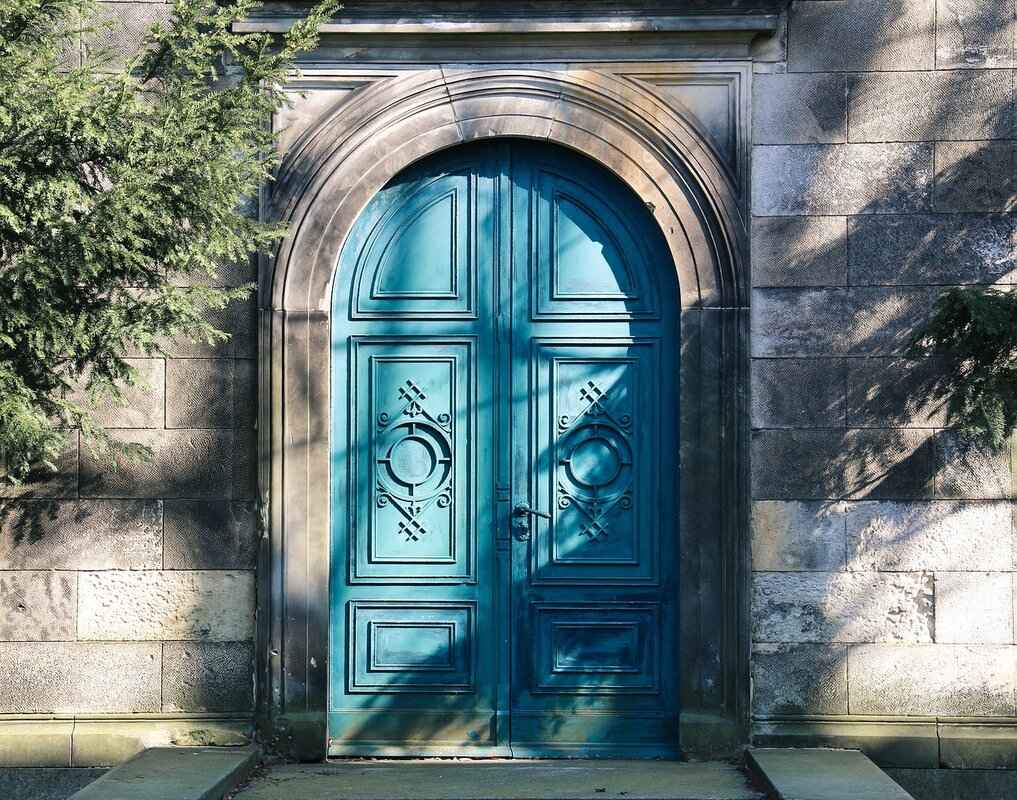
Practical Tips for Designing Unique Facades
Designing a unique facade is not just about aesthetics; it is an art that requires a deep understanding of architecture, the surrounding environment, and client needs. Here are some actionable tips that architects and designers can apply to create standout facades that reflect their vision and meet client expectations.
- Engage with the Surrounding Environment
- Prioritize Functionality
- Incorporate Innovative Materials
- Utilize Color Strategically
- Embrace Texture and Patterns
- Integrate Sustainable Practices
- Collaborate with Stakeholders
- Stay Updated with Trends
Understanding the context of a building is crucial for facade design. Analyze the local architecture, cultural elements, and natural landscape to create a facade that harmonizes with its surroundings. This approach not only enhances visual appeal but also fosters a sense of community and belonging.
A facade should serve more than just an aesthetic purpose. Consider how the facade will perform in terms of energy efficiency, weather resistance, and maintenance. Integrating functional elements like shading devices or green walls can enhance both the building’s performance and its visual impact.
Experiment with a variety of materials to create unique textures and visual effects. Consider using a combination of natural and synthetic materials, such as wood, glass, and metal, to achieve a distinctive look. Innovative material choices can elevate the overall design and make the facade more memorable.
Color plays a significant role in how a facade is perceived. Utilize color theory to evoke specific emotions and responses. For instance, warm colors can create a welcoming atmosphere, while cooler tones can convey professionalism. Always consider the building’s purpose and the message you want to communicate.
Adding texture and patterns can bring depth and interest to a facade. Use various techniques, such as paneling, layering, or perforation, to create visual intrigue. This not only enhances the aesthetic appeal but also helps in breaking the monotony of flat surfaces.
Incorporating sustainability into facade design is essential in modern architecture. Use eco-friendly materials and design strategies that promote energy efficiency. Consider features like green roofs or solar panels that not only serve functional purposes but also contribute to the building’s overall sustainability.
Engaging with clients, engineers, and community members can significantly enhance the design process. Their insights and feedback can provide valuable perspectives that help refine the facade design. Collaboration ensures that the final product aligns with the vision and needs of all parties involved.
Keeping abreast of the latest trends in facade design can inspire creativity and innovation. Explore emerging technologies and design philosophies, such as dynamic facades that adapt to environmental conditions. This not only enhances the building’s functionality but also sets it apart from conventional designs.
By applying these practical tips, architects and designers can create facades that are not only visually striking but also functional and sustainable. Each element of the facade should work together to tell a story, reflect the building’s purpose, and resonate with the surrounding environment.
Engaging with the Surrounding Environment
When designing a building, context is a fundamental aspect that should never be overlooked. The relationship between a building and its surroundings can significantly impact its aesthetic appeal and functionality. This section delves into how to create facades that not only stand out but also harmonize with the environment, enhancing the overall architectural narrative.
Understanding the local context involves analyzing various elements such as cultural significance, historical influences, and the natural landscape. By integrating these aspects into the facade design, architects can create buildings that resonate with their surroundings. For instance, using local materials can help a facade blend seamlessly with the environment while also supporting regional craftsmanship.
- Local Materials: Incorporating materials that are native to the area can enhance the building’s connection to its context. For example, using stone from local quarries or timber sourced from nearby forests can create a sense of place.
- Architectural Styles: Studying the prevalent architectural styles in the vicinity can guide designers in choosing elements that reflect local traditions. This might include rooflines, window styles, or decorative motifs that echo the neighborhood’s character.
- Environmental Considerations: Understanding the climate and natural elements of the area can inform decisions about facade orientation, shading, and insulation. For example, in hotter climates, designing facades with overhangs can reduce heat gain, while in colder regions, maximizing sunlight exposure can enhance energy efficiency.
Moreover, engaging with the community during the design process can yield valuable insights. Hosting workshops or feedback sessions can help architects understand the desires and concerns of local residents, which can be reflected in the facade design. This collaborative approach not only fosters a sense of ownership among community members but also ensures that the building serves its intended purpose effectively.
Another essential factor to consider is the visual connection between the building and its surroundings. Facades should be designed to frame views, highlight landscape features, or create focal points that draw attention to the natural beauty of the area. For instance, large windows or balconies can invite the outside in, fostering a seamless transition between indoor and outdoor spaces.
Incorporating elements of green design can also enhance the building’s relationship with its environment. Green walls, living roofs, and native landscaping can create a facade that not only looks beautiful but also supports biodiversity and promotes sustainability. These features can soften the building’s presence in the landscape, making it feel more integrated with nature.
Ultimately, the goal of engaging with the surrounding environment is to create a facade that tells a story—one that reflects the history, culture, and natural beauty of the area. By thoughtfully considering the context in which a building exists, architects can design facades that are not only visually compelling but also deeply rooted in their environment.
Consulting with Stakeholders
In the realm of architectural design, collaboration is not merely a buzzword; it is a fundamental principle that can significantly enhance the quality and functionality of facade design. Engaging with a diverse range of stakeholders—including clients, engineers, and community members—can lead to more innovative, practical, and aesthetically pleasing outcomes. This section delves into the multifaceted benefits of stakeholder involvement in the facade design process.
First and foremost, clients bring unique insights and expectations to the table. Their vision for the building often stems from personal experiences, cultural backgrounds, and specific functional requirements. By actively involving clients in the design discussions, architects can ensure that the facade aligns with their aspirations. This not only fosters a sense of ownership but also enhances client satisfaction, as they see their ideas reflected in the final design.
Moreover, engineers play a crucial role in the feasibility and functionality of facade designs. Their expertise in materials, structural integrity, and environmental considerations is invaluable. By collaborating closely with engineers, architects can explore innovative solutions that balance aesthetic appeal with practical constraints. This partnership can lead to the development of facades that are not only visually striking but also structurally sound and energy-efficient.
Another vital aspect of stakeholder engagement is the input from community members. The surrounding community often has a vested interest in new developments, as these structures can impact their daily lives. Conducting community consultations can provide architects with insights into local preferences, cultural significance, and historical context. This engagement can help create facades that resonate with the community and enhance the overall urban landscape.
| Stakeholder Type | Benefits of Involvement |
|---|---|
| Clients | Ensures design aligns with vision and needs |
| Engineers | Enhances structural integrity and feasibility |
| Community Members | Incorporates local culture and preferences |
Incorporating stakeholder feedback not only enriches the design process but also fosters a collaborative environment where all voices are heard. This inclusive approach can lead to innovative design solutions that might not have emerged in a more isolated setting. Furthermore, when stakeholders feel that their input is valued, it can lead to greater community support for the project, reducing potential conflicts and facilitating smoother approvals.
Lastly, the integration of technology, such as virtual reality and 3D modeling, can enhance stakeholder engagement by allowing them to visualize the proposed designs more effectively. These tools can bridge the gap between technical jargon and layman’s terms, making it easier for all parties to understand and contribute to the design process.
In summary, consulting with stakeholders is not just a procedural step; it is a vital component of successful facade design. By embracing collaboration and valuing diverse perspectives, architects can create facades that are not only unique and functional but also deeply connected to the community they serve.
Frequently Asked Questions
- What is the significance of a building’s facade?
The facade is the face of a building, making it crucial for first impressions. It not only enhances aesthetic appeal but also influences functionality and energy efficiency.
- How do I choose the right materials for a facade?
Selecting materials involves considering durability, visual impact, and environmental factors. Natural materials like wood and stone offer warmth, while synthetic options can provide modern aesthetics.
- What role does color play in facade design?
Color can evoke emotions and perceptions. Choosing the right color palette can significantly impact how a building is viewed, helping it stand out or blend into its environment.
- Can sustainability be incorporated into facade design?
Absolutely! Sustainable practices can be integrated by using eco-friendly materials and designing energy-efficient facades that reduce a building’s carbon footprint.
- What are some current trends in facade design?
Minimalism and dynamic facades are trending now. Minimalism focuses on simplicity and elegance, while dynamic designs adapt to environmental conditions, showcasing innovative technology.
- How can I ensure my facade harmonizes with its surroundings?
Engaging with the surrounding environment is key. Understanding local culture, architecture, and community input can help create a facade that resonates with its context.

